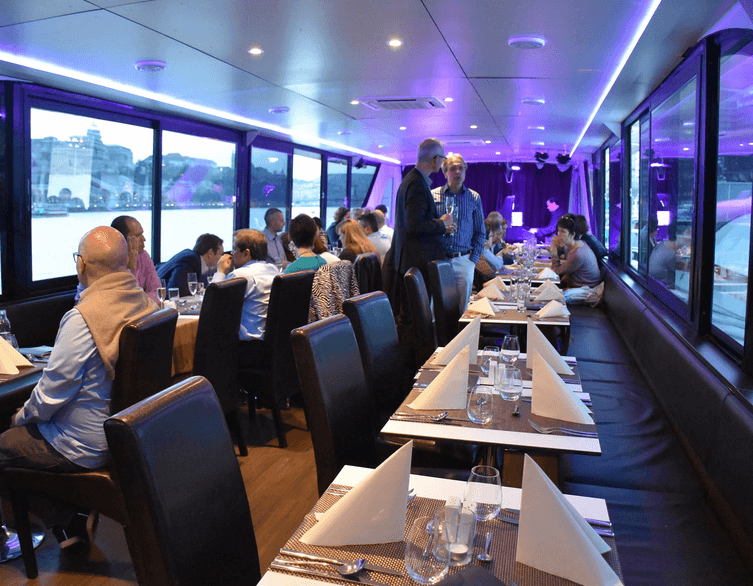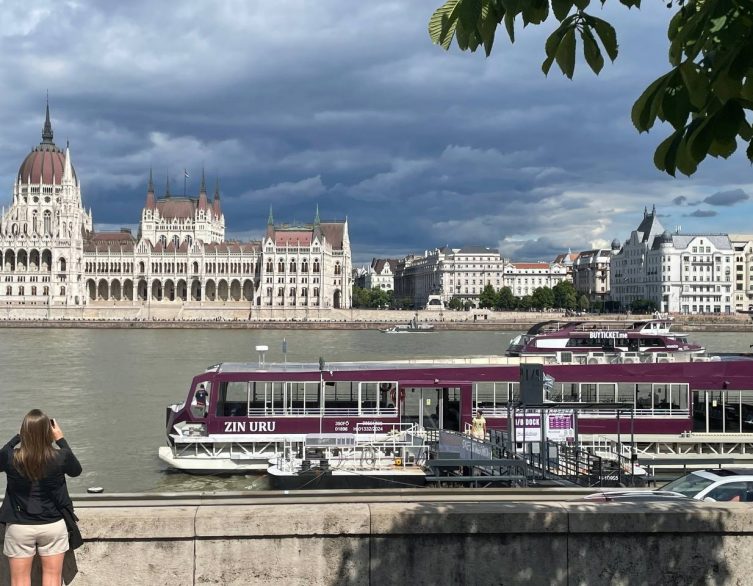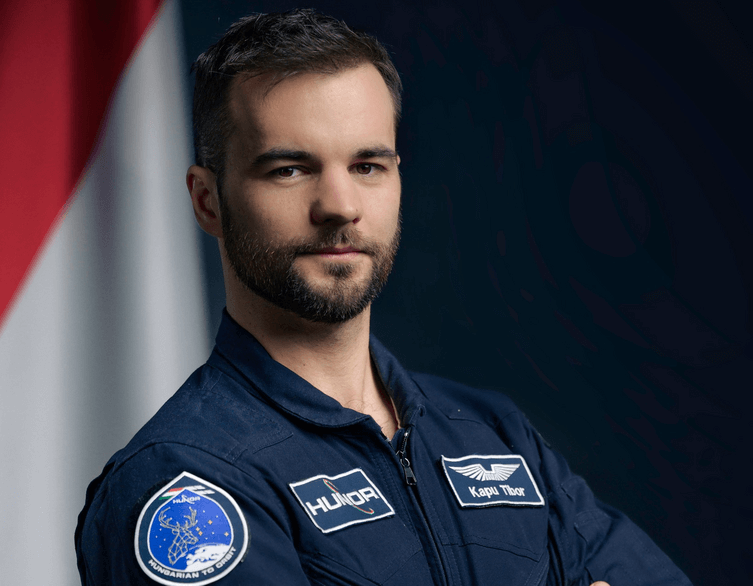Hungarian Astronaut Tibor Kapu’s Space Adventure Gets Another Plot Twist

Picture this: you’re all suited up for the adventure of a lifetime, bags packed, dreams soaring higher than a SpaceX rocket, and then… “Sorry folks, we need to check a few more things.” Welcome to the wonderfully unpredictable world of space travel, where even the most meticulously planned missions can turn into cosmic waiting games.
The Ultimate Delayed Flight Experience
Hungarian astronaut Tibor Kapu and his international crew are currently experiencing what might be the most expensive flight delay in history. The Axiom-4 mission, originally scheduled to blast off on May 29th, has been playing a game of celestial hopscotch with launch dates that would make even the most patient traveler reach for their stress ball.
First, it was pushed to June 8th due to some electrical hiccups in the Crew Dragon module. Then June 9th came and went because the Falcon 9 rocket wasn’t quite ready for its big moment. Weather decided to join the party on June 10th, because apparently even space missions aren’t immune to Mother Nature’s mood swings. But the real drama began when SpaceX discovered a liquid oxygen leak during preparations – the kind of technical issue that makes everyone very, very careful about proceeding.
When Space Stations Need a Plumber
Just when it seemed like the rocket issues were sorted, the International Space Station itself decided to throw a curveball. A pressure anomaly was detected in the Zvezda service module – essentially, the ISS equivalent of finding a leak in your apartment’s plumbing, except this apartment happens to be orbiting Earth at 17,500 miles per hour.
NASA and Roscosmos, the space agencies’ version of the ultimate repair team, have been working together to assess and fix the situation. The good news is that cosmonauts aboard the space station recently performed inspections of the pressurized module’s interior surfaces, sealed some additional areas of interest, and measured the current leak rate. Following this effort, the segment is now holding pressure properly. It’s like cosmic duct tape, but infinitely more sophisticated.
Best deals of Budapest
The Crew That Keeps on Smiling
Despite all these delays, the crew remains remarkably positive and professional. At this point, Tibor Kapu might as well be the poster child for patience and optimism – qualities that serve you well whether you’re waiting for a delayed train in Budapest or a delayed rocket to the stars. Maybe Tibor will sleep in his spacesuit until then, just in case they get the green light earlier than expected. After all, when you’ve been waiting this long for your cosmic adventure, you don’t want to miss it because you couldn’t find your space boots.
The crew remains in quarantine, ready to launch at a moment’s notice. One can only imagine the mix of excitement and anticipation they must be feeling, knowing that their historic mission is so close yet still dependent on the final technical clearances.
June 19th: The New Magic Date
The latest announcement confirms that June 19th is now the target launch date. The liquid oxygen leak in the Falcon 9 rocket has been successfully resolved, and SpaceX has completed a successful static fire test. The space station’s pressure issues appear to be under control as well. It’s like finally getting all the traffic lights to turn green at once – a beautiful moment of cosmic alignment.
This mission represents something truly special for multiple countries. Shubhanshu Shukla will become the first Indian astronaut to visit the ISS and only the second Indian in space since Rakesh Sharma’s historic flight in 1984. For Hungary, it marks the return of a Hungarian to space since Bertalan Farkas’s mission decades ago. Poland’s Slawosz Uznanski-Wisniewski will also make history as part of this international crew.
A Budapest Connection to the Stars
For visitors to Budapest, this mission adds an extra layer of excitement to the city’s already rich tapestry of achievements. While you’re wandering through the thermal baths or admiring the Parliament building’s Gothic Revival architecture, remember that somewhere above you, a fellow Hungarian might be conducting experiments in zero gravity and gazing down at Earth from the ultimate vantage point.
The mission will last 14 days and include numerous scientific experiments that will contribute to Hungary’s growing space industry. Kapu will be conducting 30 different experiments during his stay on the ISS, research that could benefit not just Hungary but the entire international scientific community. These experiments represent a record number for Axiom missions, showcasing the ambitious scientific goals of this international collaboration.
The HUNOR Program’s Journey
The path to this moment began with a government decision in July 2021, when Hungary announced its ambitious space program. The Hungarian to Orbit program, cleverly abbreviated as HUNOR, was designed to put Hungary back on the space map after decades since Bertalan Farkas’s pioneering mission.
Tibor Kapu was selected in May 2024 from a competitive field of candidates, with Gyula Cserényi serving as his backup. The selection process was rigorous, and the training even more so. Kapu underwent survival training, earned his pilot certification, and completed astronaut training accredited by the European Space Agency. He trained with NASA, the Japanese space agency, and Axiom Space, learning everything from launch procedures to Dragon spacecraft operations.
The Beauty of Cosmic Patience
There’s something beautifully human about this whole situation. Here we have cutting-edge technology, international cooperation at its finest, and astronauts trained to handle the most extreme conditions imaginable – and yet they’re all subject to the same universal truth that affects every traveler: sometimes you just have to wait.
The repeated delays, while frustrating, actually demonstrate the incredible attention to safety and detail that goes into human spaceflight. Every postponement represents another layer of verification, another check to ensure that when Tibor Kapu and his crewmates finally do launch, they’ll have the best possible chance of a safe and successful mission.
International Space Cooperation at Its Finest
This mission beautifully exemplifies international cooperation in space exploration. The crew consists of Peggy Whitson, a veteran NASA astronaut serving as commander, Shubhanshu Shukla as pilot, and mission specialists Tibor Kapu and Slawosz Uznanski-Wisniewski. It’s a collaboration between NASA, SpaceX, ISRO, ESA, and the Hungarian space program – a true testament to how space exploration brings nations together.
For India, this mission serves as crucial preparation for their own Gaganyaan program, which aims to send Indian astronauts to space using indigenous technology. The experience gained from this ISS mission will directly benefit India’s future space endeavors and strengthen the country’s position in global space exploration.
Looking Up from Budapest
So the next time you’re in Budapest, take a moment to look up at the night sky. Soon enough, there might be a Hungarian up there among the stars, representing not just his country but the spirit of human exploration and international cooperation. And who knows? Maybe he’ll wave down at the beautiful city of Budapest, where thermal baths meet space dreams and every delay is just another chapter in an incredible adventure story.
This will be Axiom Space’s fourth commercial mission to the ISS, following successful missions in 2022, 2023, and 2024. The Houston-based company is also planning to build its own private space station in the coming years, making this mission part of a larger vision for commercial space exploration.
Until then, Tibor Kapu continues his patient vigil, probably checking his space suit one more time and dreaming of that moment when the Falcon 9 finally roars to life and carries him toward the stars. After all, the best adventures are often worth the wait, and this cosmic journey promises to be absolutely stellar.
Related news
Related events





















